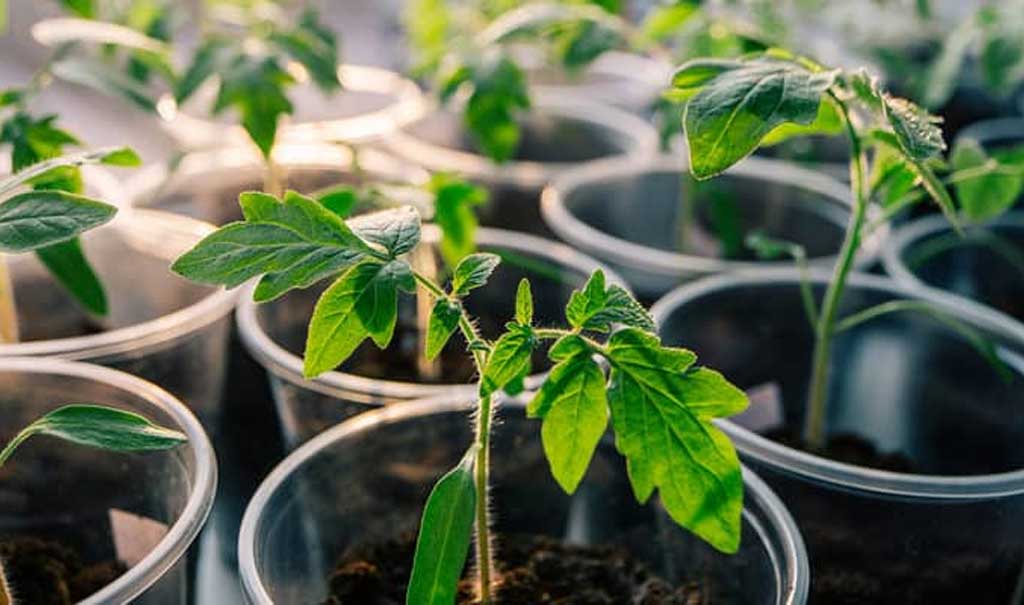Most people think about the color spectrum of lighting only after storms, when rainbows might be present. Rainbows are formed when natural sunlight is refracted through moisture that is suspended in the atmosphere, with that refraction breaking the natural sunlight into its individual visible light components that comprise the color lighting spectrum. However horticulturists have come to understand that these varying intricacies within the spectrum of light have varying effects on the plants soaking up all that UV light for sustenance and growth.

Color Spectrum and Plant Growth
Green plants need natural sunlight to activate the chlorophyll that generates nutrients in the plants’ vegetation through the process of photosynthesis. Over millions of years of growth and development, the biochemistry in leaves has evolved to use different parts of the color spectrum for different purposes. It is not necessary to deconstruct natural sunlight in order to make plants grow, but when plants are cultivated in an indoor growing facility that does not use natural sunlight, a cultivator will generate better quality crops with larger yields by matching the color spectrum of a facility’s artificial LED grow lighting system with the specific color spectrum needs of the plants.
As is observed with a rainbow, the visible color spectrum of light ranges from red and orange tones, to deeper blue and violet tones. This spectrum is measured as electromagnetic radiation with wavelengths between approximately 450 and 700 nanometers (nm). Some species of plants have also adapted themselves to use light that is slightly outside of the visible range and in the infrared and ultraviolet electromagnetic radiation bands, but those are not generally cultivated en mass.

Optimizing the Color Spectrum of Light for Horticulture
Botanists have gained a solid understanding of how plants use different color spectrum components during their growth cycles, with the following generalizations holding true in large part across most plants:
- Blue light is essential during a plant’s germination phase. Stronger concentrations of blue light will encourage sprouting and development of strong roots.
- Violet or purple light has a shorter wavelength and higher energy, and is thought to be effective as a secondary light source to facilitate growth and development of a plant’s leafy vegetation.
- Green light is generally reflected away from plants (which is why they appear green), but plants will absorb a small amount of green light throughout the photosynthesis process.
- Yellow and white light have the lowest effect on plant growth.
- Red light impacts plant growth in several ways, including during the blooming and flowering phase. Certain specific red wavelengths will increase the production of a hormone in a plant’s vegetation that prevents the breakdown of chlorophyll. With more chlorophyll, a plant generates more nutrients and grows taller with more leafy vegetation.

The Optimal Color Spectrum for Cannabis
With the trend in various states toward the approval of medical and recreational marijuana, a significant amount of research has been conducted on how the color spectrum of light affects cannabis plant growth. Like many green plants, cannabis contains concentrations of two forms of chlorophyll, A and B. Each of those forms reacts differently to different wavelengths of light in the color spectrum. As cannabis cultivators improve their understanding of how different parts of the light color spectrum affect their crops and strains, they will need advanced lighting systems for cannabis cultivation facilities that enable them to customize and specify the light spectrum for better plant growth.
SpecGrade LED has taken this control one step further with our OpticPAR grow light technology. That technology allows growers to adjust the relative concentration of different color spectrum components to match a plant’s lighting needs with pinpoint accuracy at every stage of the plant’s growing cycle. How this might work and the color spectrum combinations that a grower might use are readily illustrated with cannabis cultivation.
Much of the research and development of how the lighting color spectrum affects plant growth has focused on cannabis because of the explosive growth of the indoor commercial cannabis cultivation industry. A cannabis cultivator will generally adhere to a certain pattern of spectrum combinations:
- Cultivators initially want a cannabis plant to establish a strong root structure during its germination and seedling stage. That root structure can be enhanced with different ratios of red and far-red light with wavelengths at 660nm and 730nm.>
- With more far-red light, cannabis plants will grow taller and have fewer leaf nodes. The plant actually wants more red than far-red light, and it has evolved through natural processes to grow taller in order to get its share of red light when it is growing in crowded fields of other plants that are also reaching for red light. A cultivator can shift relative percentages of red and far-red light to achieve the optimum height and leaf ratios as the cannabis plants develop their vegetation.
- Cannabis plants (like other plants) also need cycles of day and night for proper development. LED grow light systems are ideal for replicating these cycles because they can be switched on and off almost instantaneously, with no warm-up phase. A cultivator can factor these grow light cycles into the color spectrum variations that are used throughout the plant’s lifespan.
- As the plant approaches its flowering stage, it will need a more blended concentration of all wavelengths of light in the color spectrum. Budding and flowering is marked by many complex biochemical processes in the plant, and those processes all have different color spectrum needs.
- When the cannabis plants are in their late flowering phase and are moving toward harvest, light in the blue spectrum can be reduced.
Color spectrum variations are one of several related variables that a cultivator will want to control for better quality cannabis production. The intensity of the light and the temperature and humidity of the growing environment should also be controlled for optimum results. Advanced LED grow lights including the systems provided by SpecGrade LED, are ideal for these purposes.
SpecGrade LED’s grow light systems and our patented OpticPAR technology are characterized by advanced optics that have been developed on the foundation of our many years of experience in designing and manufacturing commercial and industrial LED lighting projects. We offer fixtures with reflectors and variable mounting options that allow growers to configure indoor lighting systems to expose their plants to the perfect amount of lighting. The low physical temperatures that result from our proprietary thermal management systems also place lower stress on temperature and humidity control systems, making SpecGrade LED Grow Lights a leader in providing high end lighting solutions to cultivation facilities of all sizes.
For answers to questions about how the lighting color spectrum affects plant growth and for more information about SpecGrade LED’s OpticPAR grow light technology, please see our website or call 888-510-4337 to speak with one of our grow light technology specialists.


